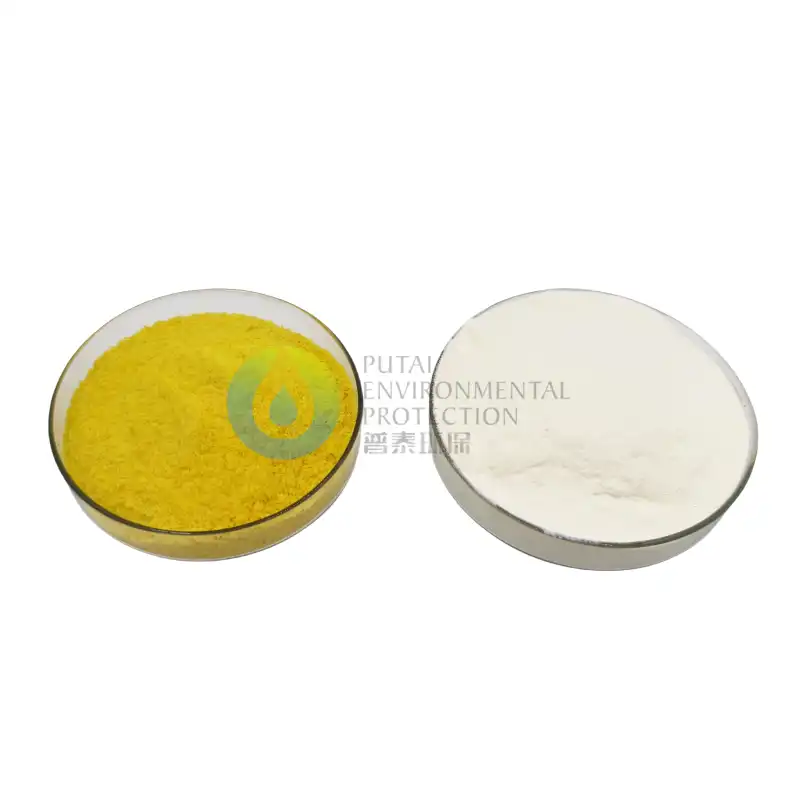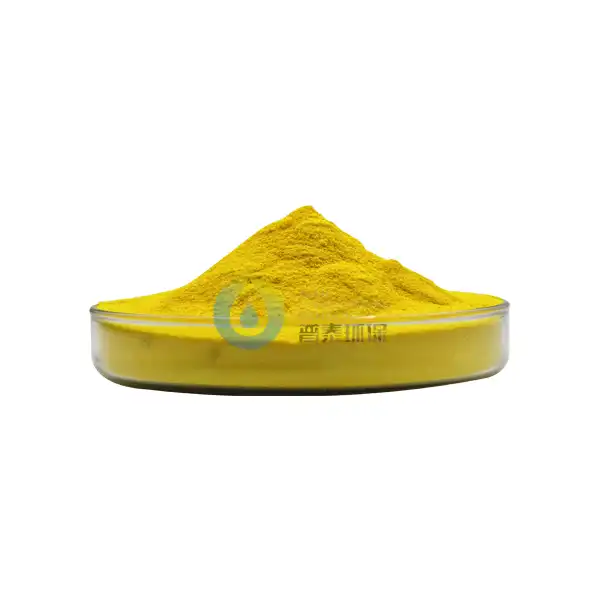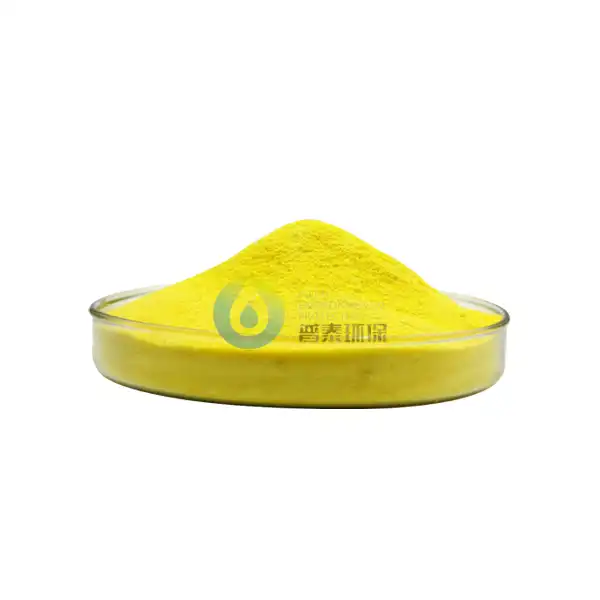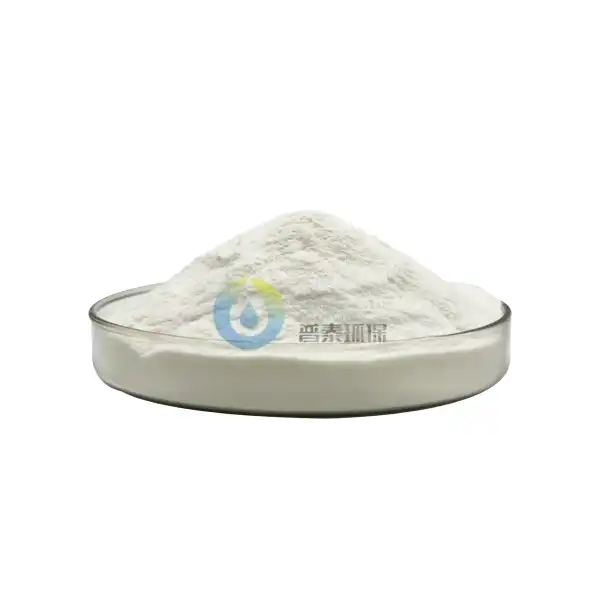Industrial Grade PAC for Heavy Metal Removal: How?
Heavy metal contamination in water sources is a growing concern for industries and municipalities alike. As environmental regulations become more stringent, finding effective solutions for heavy metal removal is crucial. One such solution that has gained traction in recent years is the use of Industrial grade PAC (Polyaluminum Chloride) for heavy metal removal. This article delves into the mechanisms, advantages, and applications of PAC in tackling this pressing environmental issue.
Chelation mechanism: How PAC binds to lead/cadmium
The effectiveness of Industrial grade PAC in removing heavy metals like lead and cadmium from water lies in its unique chelation mechanism. Chelation is a process where organic compounds form multiple bonds with metal ions, effectively trapping them and removing them from solution.
PAC works through a multi-step process:
- Hydrolysis: When added to water, PAC undergoes hydrolysis, forming various aluminum species with different charges and sizes.
- Adsorption: These aluminum species have a high affinity for heavy metal ions, adsorbing them onto their surface.
- Complexation: The adsorbed metal ions form stable complexes with the aluminum species, creating larger, insoluble particles.
- Precipitation: These larger particles then precipitate out of the water, effectively removing the heavy metals.
The chelation mechanism of PAC is particularly effective for lead and cadmium removal due to the strong bonds formed between these metals and the aluminum species. This process not only removes the heavy metals from water but also prevents their re-release, ensuring long-term treatment efficacy.
Furthermore, the chelation mechanism of PAC is pH-dependent. At lower pH levels, the aluminum species are more positively charged, enhancing their ability to attract and bind negatively charged metal ions. As the pH increases, the aluminum species become more neutral or negatively charged, potentially reducing their effectiveness. However, PAC's wide working pH range (typically 5.0-9.0) makes it versatile for various water treatment scenarios.
Industrial PAC vs. ion exchange for metal removal
When it comes to heavy metal removal, two popular methods often come head-to-head: Industrial grade PAC and ion exchange. While both techniques can be effective, they have distinct advantages and limitations that make them suitable for different scenarios.
Let's compare these two methods:
Effectiveness
- PAC: Highly effective for a wide range of heavy metals, including lead, cadmium, chromium, and arsenic. It can handle high concentrations of contaminants and works well in complex water matrices.
- Ion Exchange: Also effective for heavy metal removal, but may be less efficient for certain metals or in the presence of competing ions. It's particularly effective for softening water and removing specific ions.
Cost
- PAC: Generally more cost-effective for large-scale operations. The initial investment is lower, and operational costs can be managed effectively with proper dosing.
- Ion Exchange: Can be more expensive, especially for large-scale operations. The resins used in ion exchange systems can be costly to replace and regenerate.
Operational Complexity
- PAC: Relatively simple to implement and operate. It can be easily integrated into existing treatment systems and doesn't require specialized equipment.
- Ion Exchange: More complex to operate and maintain. Requires regular regeneration of resins and careful monitoring of breakthrough points.
Selectivity
- PAC: Less selective, removing a broad spectrum of contaminants. This can be advantageous in situations where multiple pollutants need to be addressed.
- Ion Exchange: Highly selective, which can be beneficial when targeting specific ions but may be less effective for comprehensive treatment.
Waste Generation
- PAC: Produces sludge that needs to be properly disposed of or treated. However, advancements in sludge treatment technologies have made this process more manageable.
- Ion Exchange: Generates brine waste during regeneration, which can be challenging and expensive to dispose of, especially if it contains concentrated heavy metals.
While both methods have their merits, Industrial grade PAC often emerges as the preferred choice for large-scale industrial applications due to its versatility, cost-effectiveness, and ease of implementation. However, the optimal choice depends on specific water quality parameters, treatment goals, and operational constraints.
Mining wastewater treatment with PAC: Metal recovery rates
The mining industry is one of the largest producers of heavy metal-contaminated wastewater. Treating this wastewater is not only an environmental necessity but also an opportunity for resource recovery. Industrial grade PAC has shown remarkable efficacy in treating mining wastewater, with the added benefit of facilitating metal recovery.
Metal recovery rates using PAC in mining wastewater treatment can vary depending on several factors:
- Metal concentration in the wastewater
- pH of the solution
- Presence of competing ions
- PAC dosage and contact time
- Treatment system design
However, studies and industrial applications have shown promising results:
Copper Recovery
PAC treatment has demonstrated copper recovery rates of up to 99% in certain mining wastewaters. This high recovery rate not only cleans the water but also provides a valuable resource stream for the mining operation.
Lead and Zinc Recovery
In polymetallic mining operations, PAC has shown the ability to recover over 95% of lead and zinc from wastewater streams. This dual metal recovery capability makes PAC an attractive option for complex mining effluents.
Rare Earth Elements (REEs)
An emerging application of PAC is in the recovery of rare earth elements from mining wastewater. While research is ongoing, initial studies have shown recovery rates of 80-90% for certain REEs, opening up new possibilities for resource recovery in the mining sector.
Chromium Recovery
In chromium mining and processing operations, PAC has demonstrated chromium recovery rates exceeding 98%. This is particularly significant given the environmental and health concerns associated with chromium contamination.
The high metal recovery rates achieved with PAC treatment offer several advantages:
- Environmental Compliance: Helps mining operations meet stringent discharge regulations.
- Resource Conservation: Recovered metals can be reintroduced into the production cycle, reducing the need for raw material extraction.
- Economic Benefits: The sale of recovered metals can offset treatment costs, potentially turning wastewater treatment into a profit center.
- Reduced Waste: By recovering metals, the volume of sludge requiring disposal is significantly reduced.
It's worth noting that the success of metal recovery using PAC in mining wastewater treatment depends on proper system design and operation. Factors such as appropriate dosing, pH control, and integration with other treatment processes play crucial roles in maximizing recovery rates.
As the mining industry continues to face pressure to reduce its environmental footprint, the use of Industrial grade PAC for wastewater treatment and metal recovery presents a compelling solution. It addresses both environmental concerns and resource conservation goals, aligning with the principles of circular economy in the mining sector.
Conclusion
The application of Industrial grade PAC for heavy metal removal represents a significant advancement in water treatment technology. Its effectiveness in chelating heavy metals, coupled with its versatility and cost-effectiveness, makes it a preferred choice for many industrial applications, particularly in the mining sector. The high metal recovery rates achieved with PAC not only ensure environmental compliance but also open up new avenues for resource recovery and circular economy practices.
As we continue to face growing challenges in water quality and resource conservation, innovations in water treatment technologies like PAC will play a crucial role in shaping a sustainable future. The ability to effectively remove heavy metals while recovering valuable resources positions PAC as a key player in the intersection of environmental protection and economic sustainability.
Are you facing challenges with heavy metal contamination in your industrial wastewater? Xi'an PUTAI Environmental Protection Co., Ltd. is here to help. With over 35 years of experience in the production, sales, and R&D of water treatment chemicals, we are the leading supplier of high-quality Industrial grade PAC in north-west China. Our team of experts can provide tailored solutions to meet your specific wastewater treatment needs, ensuring both environmental compliance and resource recovery.
Don't let heavy metal contamination hold your business back. Contact us today at sales@ywputai.com to learn how our Industrial grade PAC can revolutionize your water treatment process. Let's work together towards a cleaner, more sustainable future.
References
1. Zhang, L., et al. (2019). "Mechanisms and applications of polyaluminum chloride for heavy metal removal in water treatment: A comprehensive review." Journal of Environmental Management, 238, 59-68.
2. Wang, S., et al. (2020). "Comparative study on the removal of heavy metals from mining wastewater using polyaluminum chloride and ion exchange resins." Separation and Purification Technology, 237, 116328.
3. Liu, R., et al. (2018). "Recovery of rare earth elements from mining wastewater: A review on chemistry, mechanisms and potential techniques." Journal of Environmental Chemical Engineering, 6(5), 5608-5617.
4. Huang, X., et al. (2021). "Advancements in polyaluminum chloride coagulation for enhanced heavy metal removal in industrial wastewater treatment." Water Research, 189, 116584.





